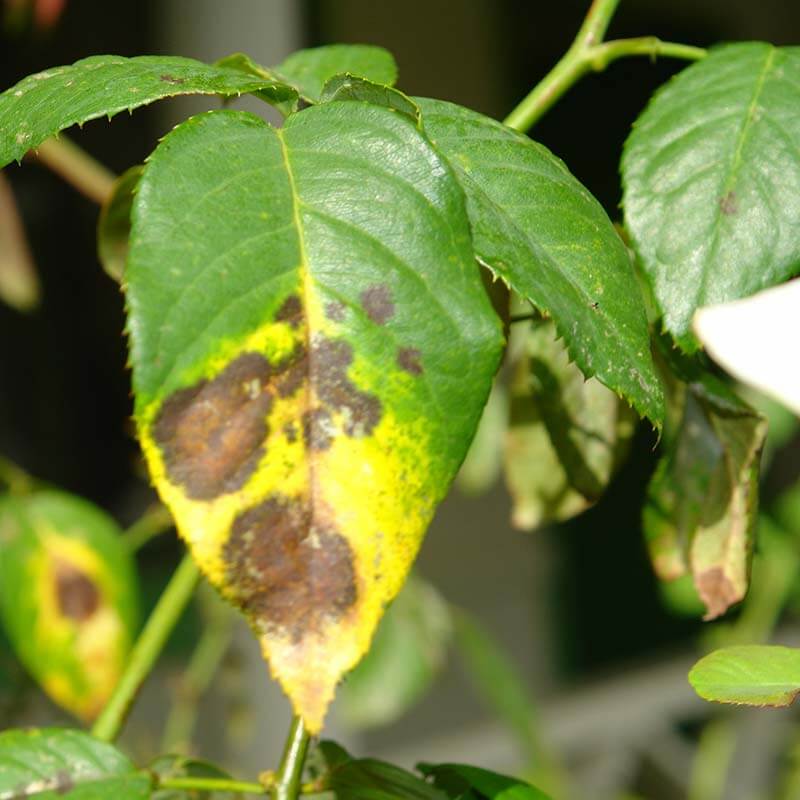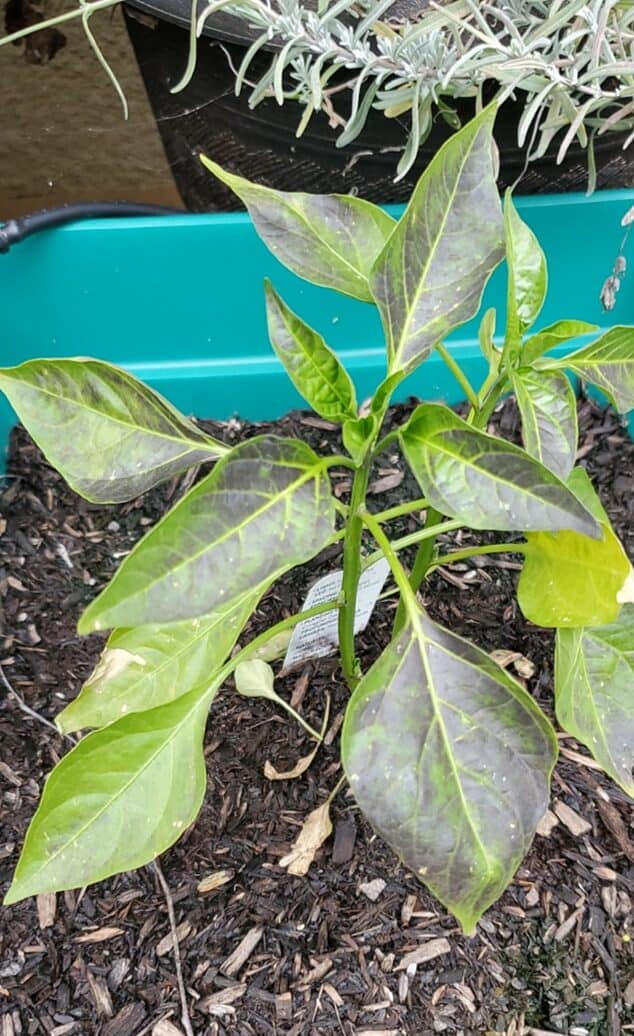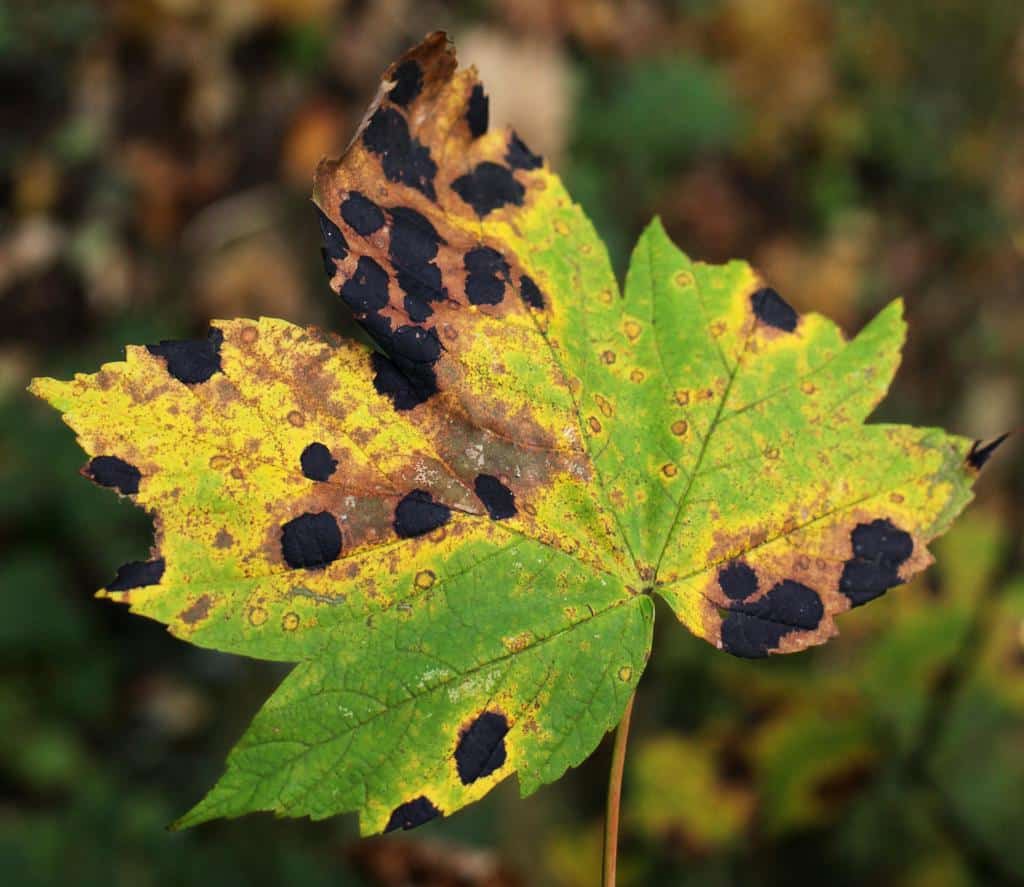Understanding the Causes of Blackening Leaves
Tree leaves turning black can be a distressing sight for any tree enthusiast or homeowner. The sudden change in leaf color can be a sign of an underlying issue that needs attention. There are several reasons why leaves may turn black on a tree, including fungal diseases, bacterial infections, and environmental stressors. Fungal diseases, such as powdery mildew and leaf spot, can cause black spots or patches on leaves, while bacterial infections like bacterial leaf spot and bacterial canker can lead to blackening of leaves. Environmental stressors, including extreme temperatures, drought, and pollution, can also cause leaves to turn black.
One of the most common causes of blackening leaves is fungal diseases. Fungi like powdery mildew and leaf spot can infect trees through wounds or natural openings, causing black spots or patches on leaves. These fungi thrive in warm and humid environments, making them a common problem in many parts of the world. Bacterial infections, on the other hand, can be caused by bacteria like Pseudomonas syringae, which can infect trees through wounds or natural openings.
Environmental stressors can also play a significant role in causing leaves to turn black. Extreme temperatures, drought, and pollution can all cause stress to trees, leading to a range of problems, including blackening leaves. For example, a sudden drop in temperature can cause leaves to become black and wilted, while drought can cause leaves to turn black and crispy.
It’s essential to identify the underlying cause of blackening leaves to take corrective action. By understanding the causes of blackening leaves, tree enthusiasts and homeowners can take steps to prevent the problem from occurring in the first place. Regular tree maintenance, including pruning and watering, can help prevent fungal diseases and bacterial infections. Additionally, taking steps to reduce environmental stressors, such as providing shade and using drought-tolerant trees, can also help prevent blackening leaves.
In some cases, leaves turning black on a tree can be a sign of a more serious underlying issue. For example, if the blackening leaves are accompanied by other symptoms like yellowing or wilting, it may be a sign of a more serious problem like root rot or tree decline. In such cases, it’s essential to seek the advice of a tree care professional to diagnose and treat the problem.
How to Identify Black Leaf Disease in Your Tree
Identifying black leaf disease in your tree can be a challenging task, especially for those without experience in tree care. However, by knowing the symptoms and signs of the disease, you can take prompt action to prevent further damage. Black leaf disease can manifest in different ways, depending on the underlying cause. Here are some common symptoms to look out for:
Black spots or patches on leaves: One of the most common symptoms of black leaf disease is the appearance of black spots or patches on leaves. These spots can be small or large, and may be accompanied by a yellow or white ring around the edges. In some cases, the entire leaf may turn black, especially if the disease is severe.
Blistering or curling of leaves: In some cases, black leaf disease can cause leaves to become blistered or curled. This can be due to the presence of fungal spores or bacterial infections, which can cause the leaves to become distorted.
Yellowing or wilting of leaves: Black leaf disease can also cause leaves to turn yellow or wilt, especially if the disease is severe. This can be due to the blockage of nutrient and water flow to the leaves, which can cause them to become stressed.
To inspect your tree for black leaf disease, start by examining the leaves carefully. Look for any signs of black spots, patches, or blistering, and check for any yellowing or wilting of leaves. You can also inspect the stems and branches for any signs of disease, such as cankers or lesions.
When inspecting your tree, it’s essential to use the right equipment and techniques. Use a pair of gloves and a magnifying glass to examine the leaves and stems closely. You can also use a tree inspection guide to help you identify any signs of disease.
By identifying black leaf disease early, you can take prompt action to prevent further damage. This can include pruning infected leaves, applying fungicides, and improving tree care practices. Regular tree maintenance can also help prevent the disease from occurring in the first place.
Remember, black leaf disease can be a serious problem for trees, especially if left untreated. By knowing the symptoms and signs of the disease, you can take action to protect your tree and prevent further damage.
The Role of Fungal Diseases in Blackening Leaves
Fungal diseases are a common cause of blackening leaves on trees. These diseases can be caused by a variety of fungi, including powdery mildew, leaf spot, and root rot. In this section, we will delve deeper into the life cycle of these fungi and how they infect trees.
Powdery mildew is a fungal disease that causes a white, powdery growth to form on the leaves of trees. As the disease progresses, the leaves may turn black and become distorted. Powdery mildew is caused by the fungus Erysiphe, which infects trees through wounds or natural openings.
Leaf spot is another fungal disease that can cause blackening leaves on trees. This disease is caused by the fungus Cercospora, which infects trees through wounds or natural openings. Leaf spot causes small, circular spots to form on the leaves of trees, which may turn black as the disease progresses.
Root rot is a fungal disease that causes the roots of trees to rot, leading to blackening leaves. This disease is caused by the fungus Phytophthora, which infects trees through wounds or natural openings. Root rot can be difficult to diagnose, as the symptoms may not appear until the disease is advanced.
The life cycle of fungal diseases that cause blackening leaves on trees typically involves the following stages:
1. Infection: The fungus infects the tree through wounds or natural openings.
2. Colonization: The fungus colonizes the tree, producing sp
The Role of Fungal Diseases in Blackening Leaves
Fungal diseases are a common cause of blackening leaves on trees. These diseases can be caused by a variety of fungi, including powdery mildew, leaf spot, and root rot. In this section, we will delve deeper into the life cycle of these fungi and how they infect trees.
Powdery mildew is a fungal disease that causes a white, powdery growth to form on the leaves of trees. As the disease progresses, the leaves may turn black and become distorted. Powdery mildew is caused by the fungus Erysiphe, which infects trees through wounds or natural openings.
Leaf spot is another fungal disease that can cause blackening leaves on trees. This disease is caused by the fungus Cercospora, which infects trees through wounds or natural openings. Leaf spot causes small, circular spots to form on the leaves of trees, which may turn black as the disease progresses.
Root rot is a fungal disease that causes the roots of trees to rot, leading to blackening leaves. This disease is caused by the fungus Phytophthora, which infects trees through wounds or natural openings. Root rot can be difficult to diagnose, as the symptoms may not appear until the disease is advanced.
The life cycle of fungal diseases that cause blackening leaves on trees typically involves the following stages:
1. Infection: The fungus infects the tree through wounds or natural openings.
2. Colonization: The fungus colonizes the tree, producing sp
The Role of Fungal Diseases in Blackening Leaves
Fungal diseases are a common cause of blackening leaves on trees. These diseases can be caused by a variety of fungi, including powdery mildew, leaf spot, and root rot. In this section, we will delve deeper into the life cycle of these fungi and how they infect trees.
Powdery mildew is a fungal disease that causes a white, powdery growth to form on the leaves of trees. As the disease progresses, the leaves may turn black and become distorted. Powdery mildew is caused by the fungus Erysiphe, which infects trees through wounds or natural openings.
Leaf spot is another fungal disease that can cause blackening leaves on trees. This disease is caused by the fungus Cercospora, which infects trees through wounds or natural openings. Leaf spot causes small, circular spots to form on the leaves of trees, which may turn black as the disease progresses.
Root rot is a fungal disease that causes the roots of trees to rot, leading to blackening leaves. This disease is caused by the fungus Phytophthora, which infects trees through wounds or natural openings. Root rot can be difficult to diagnose, as the symptoms may not appear until the disease is advanced.
The life cycle of fungal diseases that cause blackening leaves on trees typically involves the following stages:
1. Infection: The fungus infects the tree through wounds or natural openings.
2. Colonization: The fungus colonizes the tree, producing sp
The Role of Fungal Diseases in Blackening Leaves
Fungal diseases are a common cause of blackening leaves on trees. These diseases can be caused by a variety of fungi, including powdery mildew, leaf spot, and root rot. In this section, we will delve deeper into the life cycle of these fungi and how they infect trees.
Powdery mildew is a fungal disease that causes a white, powdery growth to form on the leaves of trees. As the disease progresses, the leaves may turn black and become distorted. Powdery mildew is caused by the fungus Erysiphe, which infects trees through wounds or natural openings.
Leaf spot is another fungal disease that can cause blackening leaves on trees. This disease is caused by the fungus Cercospora, which infects trees through wounds or natural openings. Leaf spot causes small, circular spots to form on the leaves of trees, which may turn black as the disease progresses.
Root rot is a fungal disease that causes the roots of trees to rot, leading to blackening leaves. This disease is caused by the fungus Phytophthora, which infects trees through wounds or natural openings. Root rot can be difficult to diagnose, as the symptoms may not appear until the disease is advanced.
The life cycle of fungal diseases that cause blackening leaves on trees typically involves the following stages:
1. Infection: The fungus infects the tree through wounds or natural openings.
2. Colonization: The fungus colonizes the tree, producing sp
The Role of Fungal Diseases in Blackening Leaves
Fungal diseases are a common cause of blackening leaves on trees. These diseases can be caused by a variety of fungi, including powdery mildew, leaf spot, and root rot. In this section, we will delve deeper into the life cycle of these fungi and how they infect trees.
Powdery mildew is a fungal disease that causes a white, powdery growth to form on the leaves of trees. As the disease progresses, the leaves may turn black and become distorted. Powdery mildew is caused by the fungus Erysiphe, which infects trees through wounds or natural openings.
Leaf spot is another fungal disease that can cause blackening leaves on trees. This disease is caused by the fungus Cercospora, which infects trees through wounds or natural openings. Leaf spot causes small, circular spots to form on the leaves of trees, which may turn black as the disease progresses.
Root rot is a fungal disease that causes the roots of trees to rot, leading to blackening leaves. This disease is caused by the fungus Phytophthora, which infects trees through wounds or natural openings. Root rot can be difficult to diagnose, as the symptoms may not appear until the disease is advanced.
The life cycle of fungal diseases that cause blackening leaves on trees typically involves the following stages:
1. Infection: The fungus infects the tree through wounds or natural openings.
2. Colonization: The fungus colonizes the tree, producing sp
The Role of Fungal Diseases in Blackening Leaves
Fungal diseases are a common cause of blackening leaves on trees. These diseases can be caused by a variety of fungi, including powdery mildew, leaf spot, and root rot. In this section, we will delve deeper into the life cycle of these fungi and how they infect trees.
Powdery mildew is a fungal disease that causes a white, powdery growth to form on the leaves of trees. As the disease progresses, the leaves may turn black and become distorted. Powdery mildew is caused by the fungus Erysiphe, which infects trees through wounds or natural openings.
Leaf spot is another fungal disease that can cause blackening leaves on trees. This disease is caused by the fungus Cercospora, which infects trees through wounds or natural openings. Leaf spot causes small, circular spots to form on the leaves of trees, which may turn black as the disease progresses.
Root rot is a fungal disease that causes the roots of trees to rot, leading to blackening leaves. This disease is caused by the fungus Phytophthora, which infects trees through wounds or natural openings. Root rot can be difficult to diagnose, as the symptoms may not appear until the disease is advanced.
The life cycle of fungal diseases that cause blackening leaves on trees typically involves the following stages:
1. Infection: The fungus infects the tree through wounds or natural openings.
2. Colonization: The fungus colonizes the tree, producing sp








:max_bytes(150000):strip_icc()/shot-hole-disease-example-big-1c8a80aa4663428284e1d32f666a1c00.jpg)
